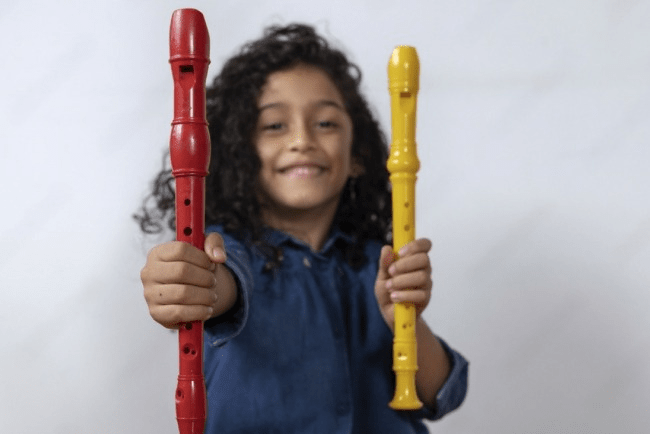Differences Between Soprano, Alto, and Tenor Recorders
June 16, 2021
Online recorder lessons offer a wealth of opportunities to delve into the world of music. A crucial aspect explored during these lessons is understanding the differences between the main types of recorders: soprano, alto, and tenor. These distinctions are critically important for appreciating the unique qualities of each instrument, and recorder teachers give this special attention.
Soprano Recorder
The soprano recorder, also known as the descant, is the most common and popular type for beginners. It has a bright and clear tone, ideal for melodic lines. In online recorder lessons, students often start with the soprano, as it is easier to handle and quickly master basic playing techniques.
Alto Recorder
The alto recorder sounds a fifth lower than the soprano and has a richer and deeper tone. This type of recorder is often used for secondary parts or melodies that require a deeper and more expressive sound. In online lessons, the recorder teacher helps students master the technique of playing the alto, which demands greater finger agility and breath control.
Tenor Recorder
The tenor recorder is a larger and lower instrument, sounding an octave below the soprano. It has a rich, full, and powerful sound, making it ideal for playing harmonically rich parts. During online recorder lessons, the teacher often focuses on the unique aspects of playing the tenor, such as managing a larger instrument and the breathing techniques needed to maintain its deep sound.
Choosing the Instrument Based on Musical Material
Understanding the differences between soprano, alto, and tenor recorders helps students select the most suitable instrument for specific musical material. In online recorder lessons, the teacher often discusses with students how the choice of instrument can impact the interpretation and performance of various musical pieces, and how to diversify their musical repertoire by including different types of recorders.
Technical Nuances of Playing Different Recorders
Each type of recorder requires a unique approach in playing technique. Online recorder lessons pay special attention to the technical nuances associated with the size and sound of each instrument. For example, playing the tenor requires wider finger spreading and more finger strength, while the alto and soprano demand more delicate and precise finger techniques.
Diversifying the Repertoire
Learning different types of recorders allows students to expand their musical repertoire. The recorder teacher helps students select compositions that suit the characteristics of each instrument, offering them the chance to explore various styles and genres of music.
Importance of an Individualized Approach
In online recorder lessons, each student is approached individually, considering their skill level, musical preferences, and physical characteristics. This ensures the most effective use of each type of recorder's possibilities and helps students achieve the best results in their musical education.
Thus, examining the differences between soprano, alto, and tenor recorders in online lessons is key to understanding and mastering this unique instrument. It not only improves students' technical skills but also broadens their musical horizons, allowing a deeper appreciation and understanding of musical art.




